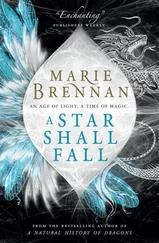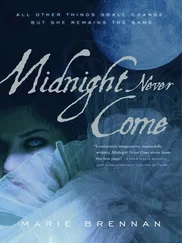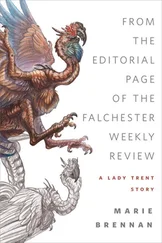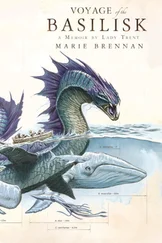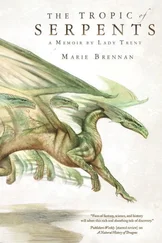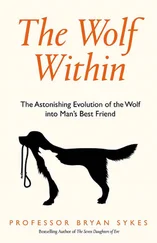Of course my first thought was “temple.” We humans have a long history of attaching that name to any monumental Draconean structure whose use we do not understand; this one might be constructed of wood and rough field stone rather than the carefully shaped blocks of the ancients, but what other purpose could motivate them to build so large a place?
I should have guessed the answer, for the parts of the village I had seen thus far had one exceedingly obvious lack. But it was not until I drew close and smelled the odour arising from it that I realized the truth.
Ruzt unbarred the door and ushered me inside the yak barn.
It contained what I presumed was every single yak belonging to the village, penned in a series of smaller enclosures. In each enclosure, the beasts shared a common style of nose-ring, which I understood to be owners’ marks. Wherever the rest of the Draconeans had gone, they had left behind their livestock—and, I soon realized, it was the duty of these three to care for them until spring.
I spent a good deal of time in that yak barn during my stay in the village. I knew from past experience in other parts of the world that assistance with daily tasks goes some way toward establishing friendly relations, and it was no different here (though my aid did little to thaw Zam’s heart). But my motives were not entirely altruistic: owing to the number of beasts inside the barn, it was also the warmest place in the village, unless I wished to spend the months huddled right next to the Draconeans’ fire. Furthermore, there was something of great interest to me inside that barn.
From above us I heard a familiar cry.
“Mews!” I said in startlement, looking at the Draconeans. Naturally this meant nothing to them, and none of the Tser-zhag words I tried had any better effect. But Ruzt led me up a ladder to an attic space—a mews, I thought, remembering Suhail’s laughter at the word—filled with familiar draconic shapes. These, too, were marked, though in their case it was with paint on their hides rather than rings through the nose.
In the days that followed I discovered that the mews were an integral part of how three Draconeans could care for such a large quantity of livestock all by themselves. In Hlamtse Rong we had wondered whether mews could be trained; in the Draconean village, which was called Imsali, I learned that they could. It works far better, however, when the trainer is not human, though the reasons for this are still a mystery. But I received my answer on the matter of the mews’ diving behaviour, for this is clearly a degenerate echo of the action they use to herd yaks.
Yes, my Draconean hosts used mews as their aerial sheepdogs. The little dragons helped them drive groups of livestock out to areas where grazing could still be found—for yaks can nibble up shreds and patches of grass from beneath the snow. If they have fed well enough in summer, they can survive all winter on such fare. We supplemented this with dried fodder in the barn, but to keep them there the entire season would be detrimental to their health. My hosts therefore took them out in a steady rotation, one Draconean and cluster of mews per herd, with at least one caretaker remaining behind in the village.
Even my fascination with dragon behaviour could not persuade me to volunteer myself for such excursions, not in a Mrtyahaiman winter. It was therefore in some ways fortunate that the Draconeans clearly did not want me to leave the village. Instead I engaged in chores there: mucking out the yak barn, caring for the mews not currently on duty, and working diligently to establish some command of the local language, with the help of Ruzt.
It is difficult to tell the story of that winter among the Draconeans. I kept no journal during my time there (lacking a notebook to keep it in, or a pen with which to write). Even if I had, I could not tell you when and how I learned everything; too much of it seeped into my head by some osmotic process, assembled from a hundred little clues until one day I knew a thing, without ever quite having been told it. Even when my education was more overt, it is difficult to recall the sequence and cause. Certain details are vital enough to this tale that I will keep them in their proper places; but for the rest, I shall let them fall where they may, without undue concern for chronology.
My progress often felt painfully slow—in part because it was, and in part because it came not in grand leaps, but by small degrees. There was no moment at which I began having conversations with Ruzt. We started with the vocabulary of my immediate environment, progressed to basic verbs, muddled through the fundamentals of grammar by a great deal of trial and even more error, and by the end could tackle some abstract concepts through extensive circumlocution—all of which was great progress over where I began, but it happened so slowly that at times I doubted it was happening at all.
That I achieved so much success I largely attribute to my husband’s brilliant deduction, connecting Draconean to the languages of southern Anthiope. Familiar though I was with the concept of evolution, I was not in the habit of applying it to languages; and on my own, I do not know if I would have looked for the patterns that would allow me to extrapolate from the tongue I knew to the tongue I did not. (There is, of course, a hazard in leaning too heavily upon such analogies: I spoke very Akhian-flavored Draconean, as I instinctively defaulted to the grammar of the more familiar language whenever my attention wandered.) But with that theory in hand, I could apply my naturalist’s mind to the problem, and after a while I was able to make educated guesses as to Draconean words I had not yet learned. These were rarely correct, but they often led me toward the proper word by a faster road.
The remainder of my success is due to Ruzt. If we, analogizing to biological evolution, think of Lashon and Akhian as the domestic housecat and the lion—differing in a variety of respects, but obviously near relations—then the modern Draconean tongue is like a dog: still derived from a common ancestor, from whom all three languages have inherited some important characteristics, but much more widely separated by millennia of change. Fortunately for me, Ruzt spoke what I eventually recognized as an older, religious form of the language, comparable to Scriptural Lashon; this lay much closer to the ancient roots than their modern tongue. The language she spoke with Kahhe and Zam contained a vast number of words that I suspect derived from another tongue entirely—perhaps a human language, though it did not, to my amateur ear, appear to be Nying or Tser-zhag.
Despite this, I learned a few things, beginning with the shift my alert readers may have noticed already: my hosts were in fact hostesses. Ruzt, Kahhe, and Zam were three sisters, which is the typical household arrangement among the Draconeans. Males are fewer in number, but rather than following the polygamous structure a human society might assume, the Draconeans practice no real marriage at all. Their males live together, in several larger buildings where they are sorted according to their age group, while sister-groups maintain independent houses. They consider the sibling bond to be much more significant than the parental one, and the sororal more significant than the fraternal.
Imsali was not the only village in the region. On a clear day I could see smoke arising in other places around the Sanctuary—for that was how I came to think of the basin that encircled the great central peak, known to the Draconeans as Anshakkar. The ring of mountains surrounding it (of which Gyaptse and Cheja are but two) is nearly impassible; the col by which I entered is one of the lowest points in that ring, and as you have seen, it is not easy to traverse. Mountaineers may scale it, of course—but it is only in recent history that mountaineers have begun to frequent the region, people well equipped for the climbing of ridges and peaks, and motivated less by the search for new pastures or arable land or even trading routes than by the desire to conquer untrammeled terrain. For the inhabitants on all sides, the way is too forbidding to be worthwhile. What good would it do to enter such a place? Departure is too difficult; anyone who lived within would be isolated from the world without.
Читать дальше


